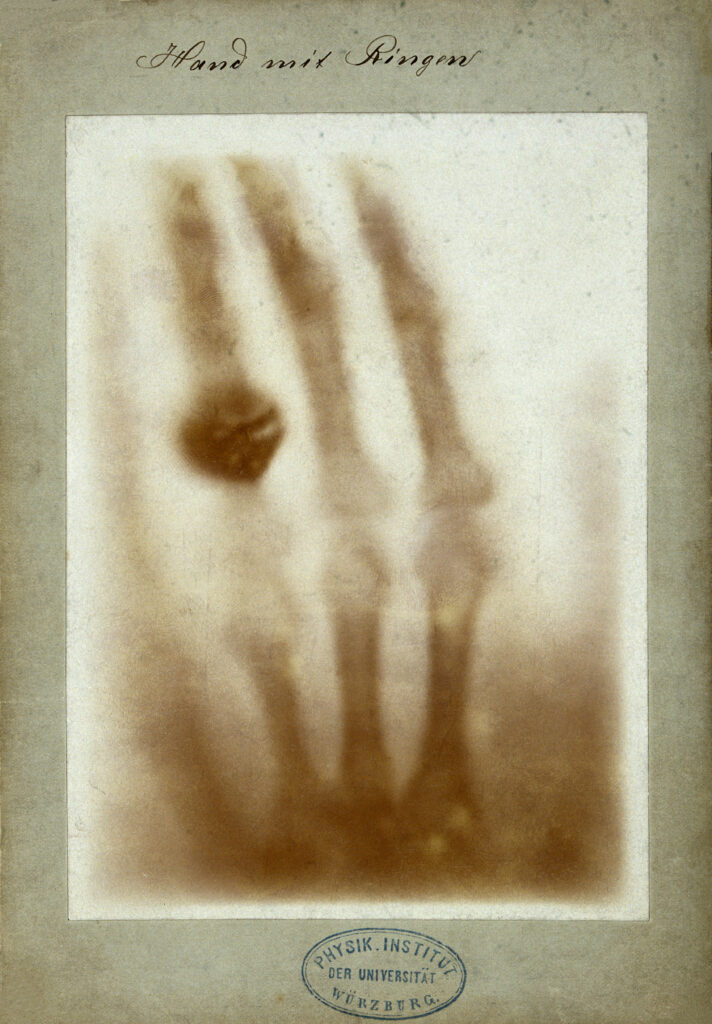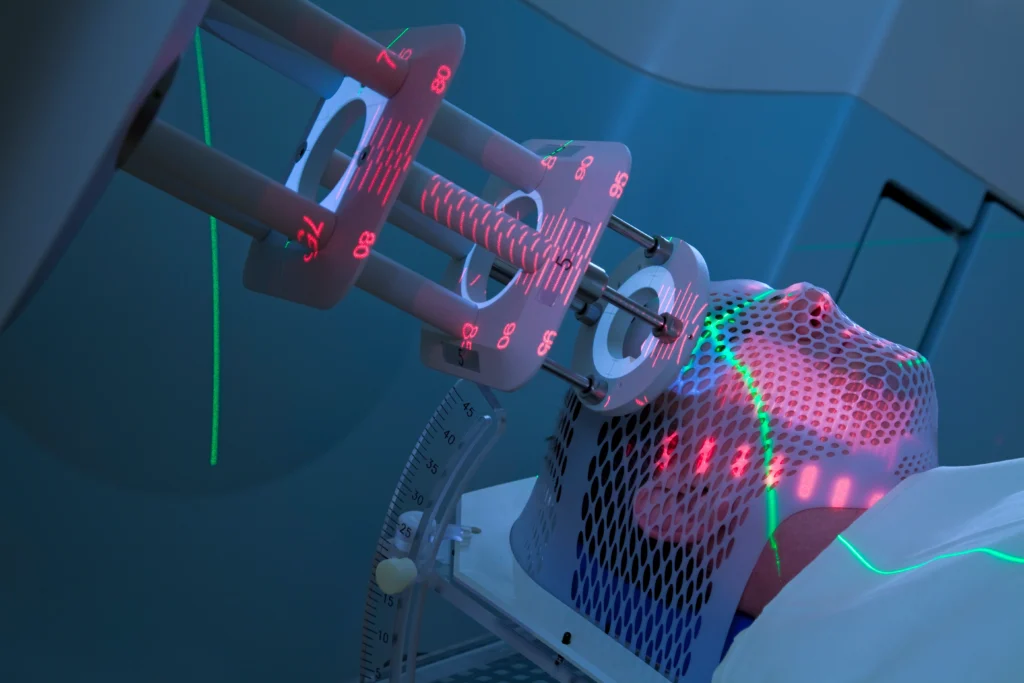
Protontherapy. Or why radiation is not as bad as you think
15/05/2024Radiation has always had an aura of danger. That invisible force that shoots through you and can silently harm beyond repair. Many people start shaking as soon as they hear about it! They start thinking about past occasions in which this natural phenomenon has gained notoriety. Chernobyl, Fukushima, the demon core and so on. Its portrayal in popular media has not helped either. Video-games like Fallout or S.T.A.L.K.E.R. or films like Spider-man or the Hulk do not do a great job at representing radiation. Although it has its dangers, beams of atomic and subatomic particles like the ones used in protontherapy can be safely used and even save lives!
Röntgen’s X-rays
You have probably had a radiography or a CAT scan taken at some point in your life. In order to see inside you a medical professional shines X-rays through your body and their intensity afterwards is detected. X-rays are photons, just like the ones that allow you to see things during the day, but with a much higher energy so that they are not completely absorbed by your body. This is the first application of radiation in medicine and it dates back to the beginning of the 20th century.

Killing cancer with radiation
You may also know that you cannot have as many radiographies as you want. This is because X-rays are a form of ionizing radiation. This means that they have enough energy to remove electrons from atoms and through extended exposure they can cause damage to tissues. This is what it is exploited in radiotherapy. With this technique, a sufficiently localized cancer is attacked with X-rays until it is destroyed. This sounds good in theory, but it has some drawbacks:
- Sparing capabilities. It damages both cancerous and healthy tissue.
- Range. It can damage the healthy tissue which sits behind the tumor.
- Entrance dose. It deposits a large amount of energy before reaching the tumor.
All this problems cause an increase in the incidence of post-treatment complications, like secondary cancers or cardiovascular diseases. This is even more worrying if we take into account the amount of people which have cancer today. In Spain, just in the year 2023, more than 260000 new cancer patients were diagnosed. Furthermore, it is estimated that more than half of them will be at some point treated with some type of radiotherapy. So we need to find a safer alternative.
Protontherapy to the rescue
Protontherapy is a another way of fighting cancer. Instead of using high energy photons, this technique uses a proton beam to eliminate a cancer. Protons are quite different from photons, they are one of the two particles which constitute the atomic nucleus and unlike photons they have both electric charge and mass. This means that they way in which they interact with matter is also completely different, as you can see in the following figure of the dose deposition (this is more or less proportional to the damage they cause. More dose, more damage) as a function of depth. It can be seen that it also solves most of the problems that radiotherapy had. In particular, protons completely stop at a very particular depth, which means that they do not harm the healthy tissue which lies beyond.

The future of radiation therapy
This relatively novel treatment (it was proposed in the mid 1940s) is receiving a great deal of attention. There are currently 134 protontherapy machines operating around the world with many more under construction and there is a lot of interdisciplinary research being carried out by renowned research groups. In particular, this is a very interesting matter to accelerator and particle physicists. However, protontherapy is not the definitive solution for cancer treatment and there is still a lot of work to be done.
Conclusion
Protontherapy is one of the many success stories of the use of radiation in a medical context and it is set to be a standard procedure which benefits many patients worldwide. I hope that this brief article helps making people less afraid of radiation. Sure, it can be dangerous and it has to be handled with care, but through its safe applications it has the potential of making people’s life a lot easier. It will not give you a super-power though…

References
Lapen, K., Yamada, Y. The Development of Modern Radiation Therapy. Curr Phys Med Rehabil Rep 11, 131–138 (2023). https://doi.org/10.1007/s40141-023-00395-6
Newhauser, W.D. and Zhang, R., The physics of proton therapy, Physics in Medicine and Biology 60, 155-209 (2015), https://doi.org/10.1088/0031-9155/60/8/R155
https://www.itnonline.com/article/proton-therapy-predictions-next-decade
https://www.mdanderson.org/cancerwise/pencil-beam-proton-therapy–what-to-know.h00-159305412.html
https://wellcomecollection.org/works/wjc8ejn2
https://www.ptcog.site/index.php/facilities-in-operation-public
https://seom.org/images/Las_cifras_del_Cancer_en_Espana_2023.pdf